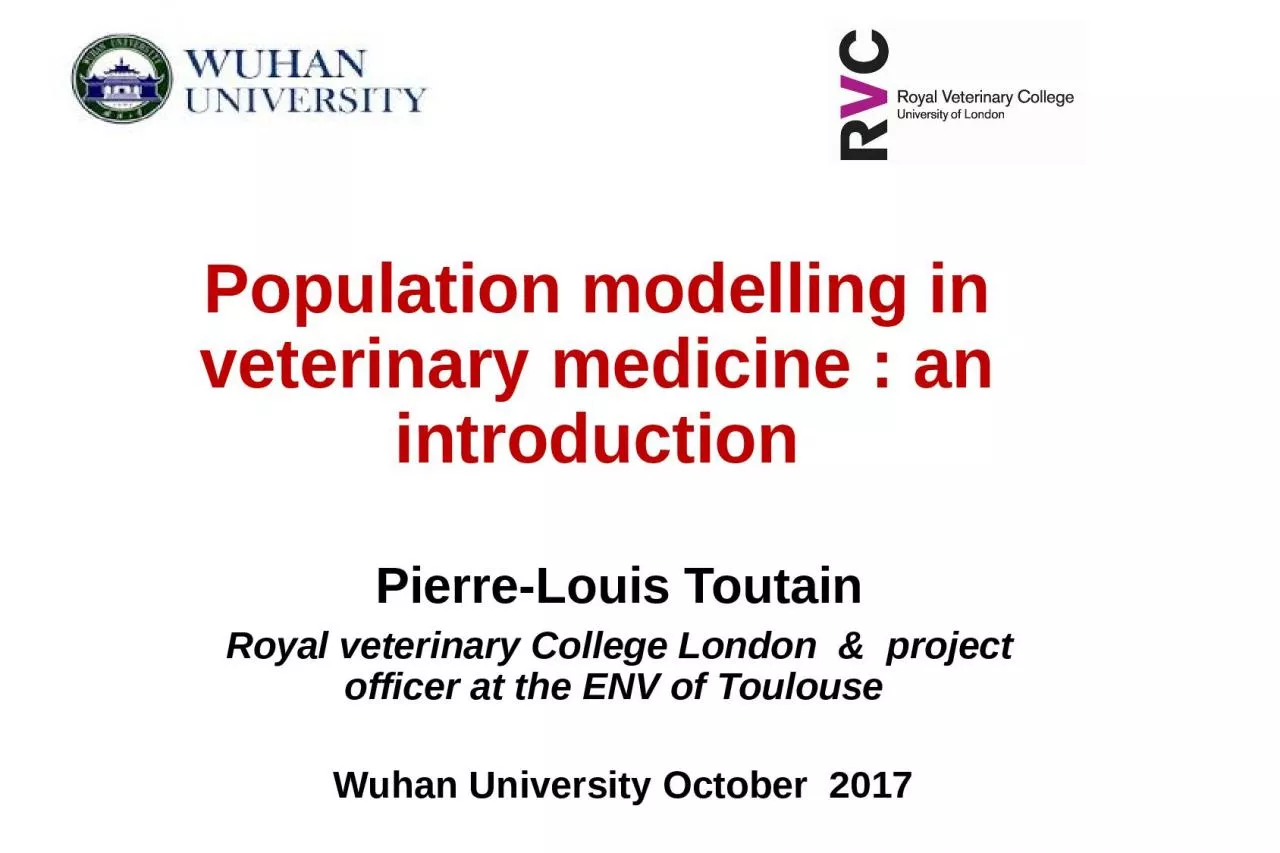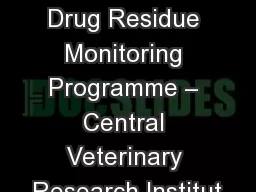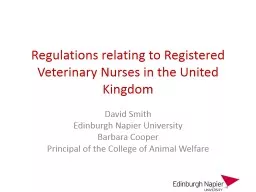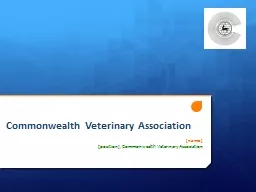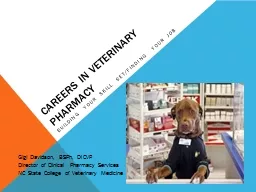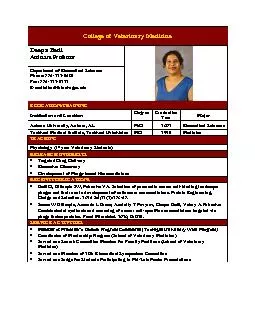PPT-Population modelling in veterinary medicine :
Author : cadie | Published Date : 2024-02-09
an introduction PierreLouis Toutain Royal veterinary College London amp project officer at the ENV of Toulouse Wuhan University October 2017 To explain the main
Presentation Embed Code
Download Presentation
Download Presentation The PPT/PDF document "Population modelling in veterinary medi..." is the property of its rightful owner. Permission is granted to download and print the materials on this website for personal, non-commercial use only, and to display it on your personal computer provided you do not modify the materials and that you retain all copyright notices contained in the materials. By downloading content from our website, you accept the terms of this agreement.
Population modelling in veterinary medicine :: Transcript
Download Rules Of Document
"Population modelling in veterinary medicine :"The content belongs to its owner. You may download and print it for personal use, without modification, and keep all copyright notices. By downloading, you agree to these terms.
Related Documents

